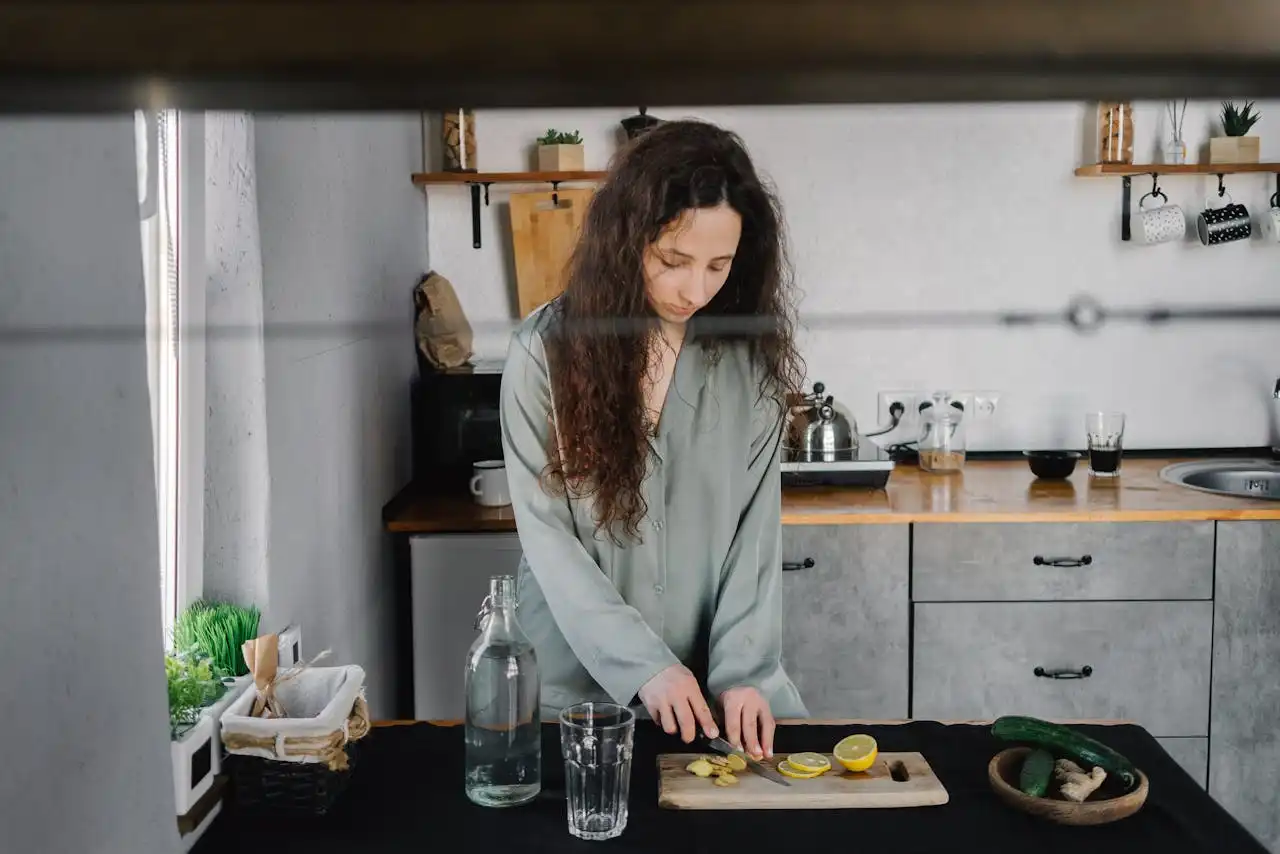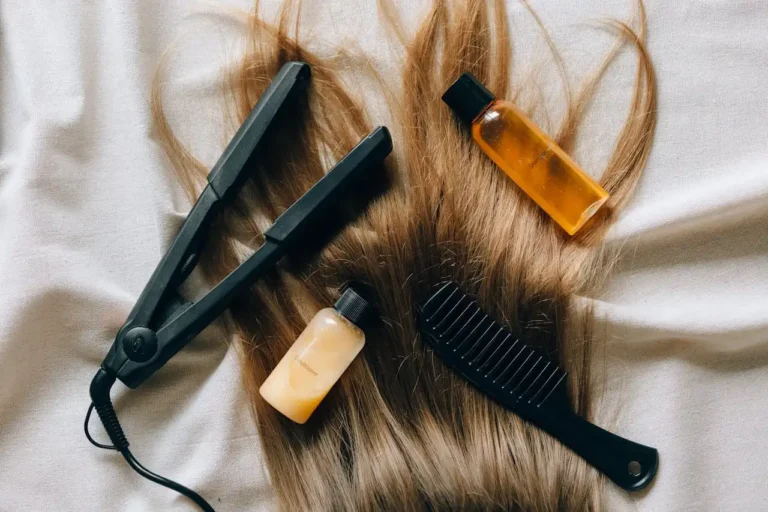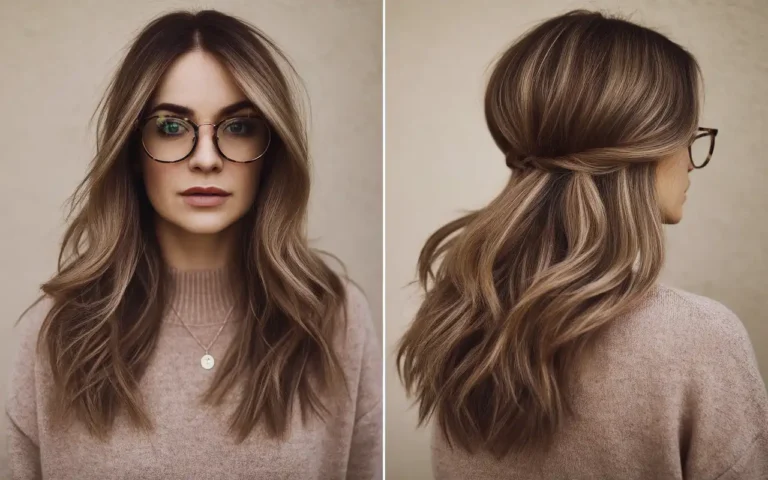DIY Hair Masks Using Kitchen Ingredients
Your kitchen holds the secret to gorgeous, healthy hair. Transform your hair naturally with these nourishing treatments.
These simple DIY hair masks use everyday ingredients you probably already have, delivering salon-quality results without expensive products or chemicals.
Moisturizing Masks for Dry and Brittle Hair

Avocado and Honey Deep Conditioning Mask
You can create an incredibly nourishing mask by mashing one ripe avocado with two tablespoons of raw honey.
This combination delivers intense moisture to parched strands while the natural oils in avocado penetrate deep into your hair shaft.
The healthy fats in avocado work as natural emollients, smoothing your hair cuticles and reducing frizz.
Honey acts as a humectant, drawing moisture from the air and locking it into your hair for lasting hydration.
Apply this mixture to damp hair from mid-length to ends, avoiding your roots if you have oily hair.
The creamy texture spreads easily and won’t drip like thinner masks, making application mess-free and thorough.
Leave the mask on for 20-30 minutes before rinsing with cool water. You’ll notice immediately softer, more manageable hair that feels silky to the touch.
This mask works particularly well for chemically processed or heat-damaged hair.
Coconut Oil and Banana Repair Treatment
Blend one ripe banana with three tablespoons of melted coconut oil for a protein-rich treatment that repairs damage while adding moisture.
The potassium in bananas strengthens your hair structure, while coconut oil provides deep conditioning benefits.
This mask works especially well for hair that breaks easily or feels weak and lifeless.
The natural sugars in banana help smooth your hair cuticles, creating instant shine and reducing tangles significantly.
Make sure to blend the mixture thoroughly to avoid banana chunks that can be difficult to rinse out.
A food processor or high-speed blender creates the smoothest consistency for easy application and removal.
Apply generously to clean, towel-dried hair and cover with a shower cap. The warmth helps the ingredients penetrate deeper into your hair shaft for maximum repair benefits.
Rinse thoroughly with lukewarm water and follow with your regular shampoo if needed.
Clarifying Masks for Oily Hair and Scalp
Apple Cider Vinegar Balancing Rinse
Mix one part apple cider vinegar with two parts water to create a powerful clarifying treatment that removes product buildup and balances your scalp’s pH levels.
This simple rinse eliminates excess oil without stripping your hair of essential moisture. These deposits can make your hair look dull and feel heavy, even when freshly washed.
Apple cider vinegar contains natural acids that dissolve mineral deposits from hard water and styling products.
Pour the mixture over your hair after shampooing, focusing on your scalp and roots where oil accumulation typically occurs.
Massage gently with your fingertips to distribute evenly and stimulate circulation. Let the treatment sit for two to three minutes before rinsing with cool water.
The vinegar smell disappears completely once your hair dries, leaving behind clean, bouncy hair with enhanced natural shine.
Lemon and Clay Purifying Mask
Combine the juice of one lemon with three tablespoons of bentonite clay powder (or finely ground oatmeal as a kitchen alternative) to create a deep-cleansing mask.
This treatment draws out impurities while the citric acid cuts through excess oil. Process for 10-15 minutes maximum, as longer exposure can be too harsh for sensitive scalps.
The natural astringent properties of lemon help tighten your hair cuticles and reduce oil production over time.
Clay absorbs toxins and excess sebum from your scalp without causing irritation or dryness.
Mix the ingredients with enough water to create a smooth paste that spreads easily but won’t run down your face.
Apply only to your scalp and roots, avoiding the lengths of your hair which may become too dry.
Rinse thoroughly with lukewarm water and follow with a light conditioner on the ends if needed.
Strengthening Masks for Damaged Hair
Egg Protein Power Treatment
Whisk two whole eggs with one tablespoon of olive oil to create a protein-packed mask that rebuilds damaged hair structure.
Eggs contain all the amino acids your hair needs to repair itself naturally and regain strength.
The protein in eggs temporarily fills in gaps in damaged hair cuticles, creating smoother, stronger strands.
Olive oil adds moisture to prevent the protein treatment from making your hair feel stiff or brittle.
Apply the mixture to clean, damp hair using a wide-tooth comb to ensure even distribution.
Focus on areas where you notice the most damage, such as around your face or where you frequently style your hair.
Cover your hair with a shower cap and leave the treatment on for 15-20 minutes.
Rinse with cool water first to prevent the egg from cooking, then follow with lukewarm water to remove all residue completely.
Greek Yogurt and Oat Strengthening Mask
Blend half a cup of plain Greek yogurt with three tablespoons of finely ground oats to create a gentle strengthening treatment.
The protein in yogurt rebuilds hair structure while oats provide soothing relief for irritated scalps.
Lactic acid in yogurt gently exfoliates your scalp, removing dead skin cells that can clog follicles and impede healthy hair growth.
The probiotics may also help maintain a healthy scalp microbiome.
The mild abrasive action of ground oats removes product buildup without harsh scrubbing.
This makes the mask perfect for sensitive scalps that react poorly to chemical clarifying shampoos.
Apply the mixture to your entire head, massaging gently into your scalp and working through to your ends.
The creamy texture feels luxurious and spreads evenly without weighing your hair down. Rinse after 20 minutes for noticeably stronger, cleaner hair.
Shine-Boosting Masks for Dull Hair

Olive Oil and Egg Yolk Gloss Treatment
Separate two egg yolks and whisk them with three tablespoons of extra virgin olive oil for an intensive shine treatment.
This combination smooths your hair cuticles and creates a natural protective coating that reflects light beautifully.
Egg yolks contain lecithin, which acts as a natural emulsifier and helps the olive oil penetrate your hair shaft more effectively.
The result is deeper conditioning and longer-lasting shine than either ingredient provides alone.
Warm the olive oil slightly before mixing to improve absorption, but don’t make it hot enough to cook the egg yolks.
The warmth opens your hair cuticles and allows the nutrients to penetrate more deeply.
Apply the mixture to dry hair before shampooing, concentrating on the mid-lengths and ends where dullness typically appears first.
Wrap your hair in a warm towel for 30 minutes, then shampoo and condition as usual for incredible glossy results.
Coffee Grounds Color-Enhancing Scrub
Mix used coffee grounds with coconut oil to create an exfoliating scalp treatment that enhances natural hair color while promoting circulation.
This mask works particularly well for brunettes, adding rich depth and shine to brown hair tones.
The caffeine in coffee grounds stimulates blood flow to your scalp, which can promote healthier hair growth over time.
The gentle scrubbing action removes product buildup that dulls your natural color. The coffee grounds should feel slightly gritty but not harsh against your skin.
Massage the mixture into your scalp using circular motions, but avoid scrubbing too vigorously to prevent irritation.
Leave the treatment on for 10 minutes after massaging, then rinse thoroughly with warm water.
You may need to shampoo afterward to remove all coffee residue, but your hair will have enhanced color depth and incredible shine.
Scalp Care Treatments

Oatmeal Soothing Scalp Mask
Grind one cup of oats into a fine powder and mix with enough warm water to create a smooth paste.
This gentle treatment soothes irritated scalps while removing flakes and buildup without harsh chemicals.
Oats contain compounds called avenanthramides that have anti-inflammatory properties, making this mask perfect for sensitive or problematic scalps.
The mild exfoliation removes dead skin cells without causing further irritation. Use your fingertips to massage gently, focusing on areas where you experience itching or flaking.
Apply the paste directly to your scalp, working in small sections to ensure complete coverage.
Let the mask sit for 15 minutes to allow the soothing properties to work, then rinse thoroughly with lukewarm water.
Your scalp will feel calm and balanced, with reduced irritation and improved comfort.
Brown Sugar Scalp Exfoliation Treatment
Mix three tablespoons of brown sugar with enough olive oil to create a scrub-like consistency.
This treatment removes dead skin cells and product buildup while moisturizing your scalp naturally.
Brown sugar provides gentler exfoliation than white sugar due to its larger crystals and natural molasses content.
The molasses adds moisture while the sugar crystals slough away flaky, dry skin effectively.
Apply the scrub to damp hair, concentrating on your scalp and roots. Your scalp will feel refreshed and clean, with improved circulation and reduced flakiness.
Use gentle circular motions to work the sugar granules against your skin, but don’t scrub aggressively enough to cause redness or irritation.
Rinse the treatment out completely with warm water, then follow with your regular shampoo and conditioning routine.
Application Tips and Timing Guidelines
Proper Application Techniques
Start with clean, slightly damp hair for most masks to ensure better product penetration and even distribution.
Towel-dry your hair gently to remove excess water without causing friction damage to wet strands.
Section your hair into manageable portions before applying masks, especially if you have thick or long hair.
This ensures every strand receives treatment and prevents missed spots that can result in uneven conditioning.
Use a wide-tooth comb or your fingers to distribute masks evenly from roots to ends, depending on the specific treatment.
Some masks work best on just the scalp and roots, while others benefit the entire length of your hair.
Always apply treatments to the underside of your hair sections as well as the top.
Many people forget to lift their hair and treat the layers underneath, which can lead to inconsistent results and missed opportunities for improvement.
Timing and Frequency Recommendations
Most kitchen ingredient masks work best when left on for 15-30 minutes, which allows enough time for nutrients to penetrate without causing irritation.
Longer isn’t always better, especially with acidic ingredients like lemon or vinegar.
Use clarifying treatments like apple cider vinegar rinses once per week maximum to avoid over-stripping your hair’s natural oils.
More frequent use can lead to dryness and increased oil production as your scalp overcompensates.
Deep conditioning masks with oils and proteins can be used 1-2 times per week, depending on your hair’s condition and needs.
Severely damaged hair may benefit from more frequent treatments initially, then reduced frequency as condition improves.
Pay attention to how your hair responds to different treatments and adjust timing accordingly.
Some hair types may need shorter processing times, while others can handle longer treatments for maximum benefit.
Safety Considerations and Patch Testing

Allergy Prevention and Testing
Always perform a patch test before trying any new hair mask, even with common kitchen ingredients.
Apply a small amount of the mixture to your inner wrist or behind your ear and wait 24 hours for any allergic reactions.
Some people develop sensitivities to ingredients they’ve used safely before, so don’t skip patch testing even with familiar items.
Look for redness, itching, swelling, or burning sensations that indicate an allergic response.
Avoid using masks containing raw eggs if you have an egg allergy, even if you can eat cooked eggs safely.
The proteins in raw eggs can sometimes trigger reactions in people with mild egg sensitivities.
If you experience any irritation during application, rinse the mask off immediately with cool water and discontinue use.
Don’t try to wait out mild discomfort, as it can quickly escalate to more serious irritation.
Ingredient Quality and Freshness
Use only fresh, high-quality ingredients for your hair masks to ensure safety and effectiveness.
Spoiled or contaminated ingredients can introduce bacteria to your scalp and cause infections or irritation.
Check expiration dates on all ingredients, including oils, honey, and dairy products. What seems safe to eat may not be safe to leave on your scalp for extended periods.
Fresh ingredients not only work better but also reduce the risk of introducing harmful bacteria to your scalp environment.
Prepare masks fresh each time rather than storing leftovers, as most kitchen ingredients don’t contain preservatives to prevent bacterial growth.
Wash all utensils and mixing bowls thoroughly before preparing your mask to prevent contamination.
Use clean hands when applying treatments, and avoid double-dipping utensils back into your mixture after touching your hair.
Conclusion
Transform your hair naturally with these simple kitchen ingredient masks that deliver professional results at home while nourishing your hair safely and affordably.







